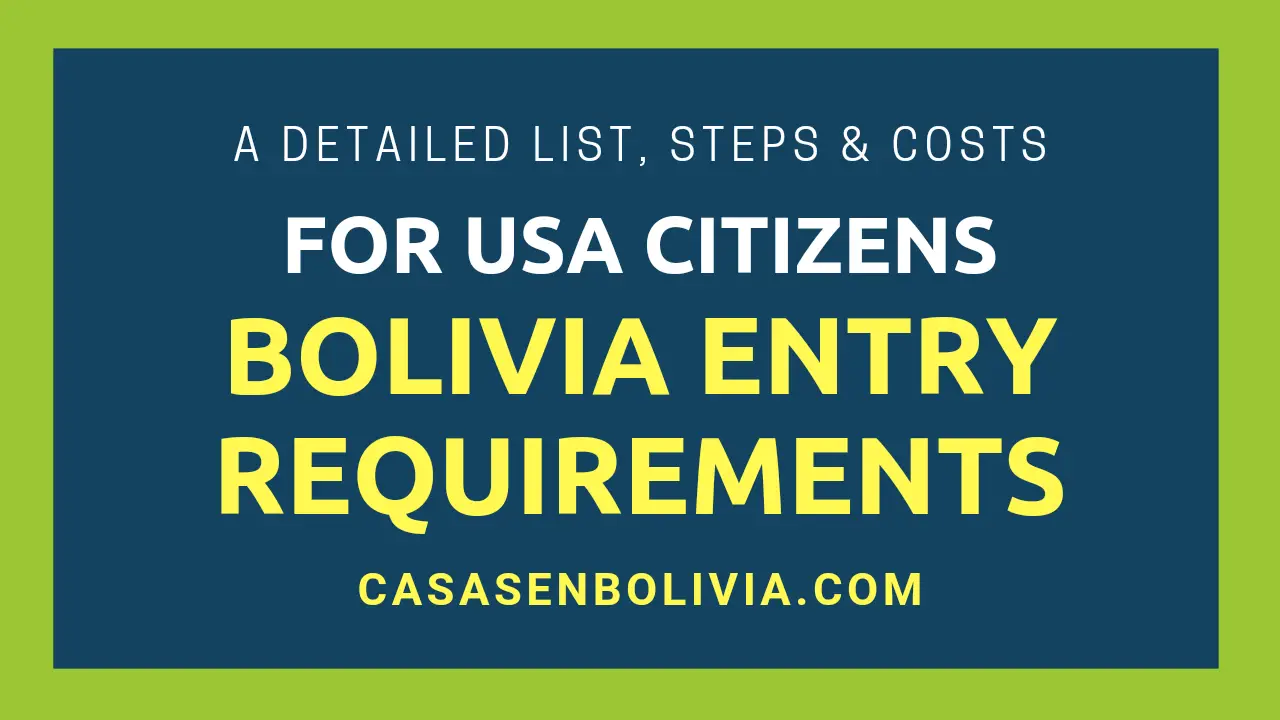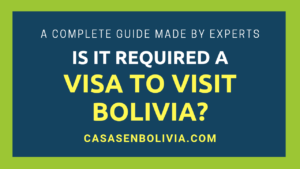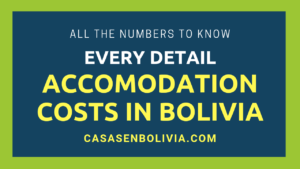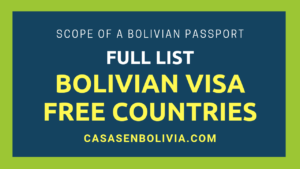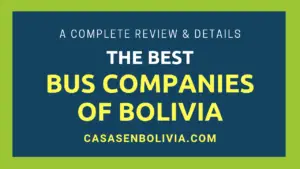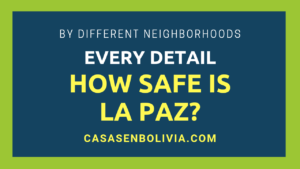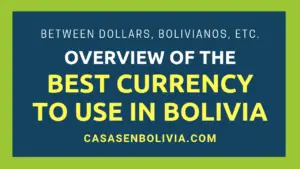Last Updated on February 15, 2025
Not long ago, Americans could enter Bolivia without a visa. However, this changed in 2007 due to a new regulation established by the socialist government at the time. In 2015, a specific Supreme Decree concerning the entry and stay of US citizens in Bolivia came into force, requiring them to present a visa in all cases.
US citizens always require a visa to enter Bolivia. They can utilize various types of visas, but the easiest to obtain is the Bolivian Tourist Visa, which can be issued at a border checkpoint or the Bolivian consulate in the US within minutes, after paying $160 and meeting certain requirements.
In this guide on whether Americans need a visa to enter Bolivia, you’ll find comprehensive details about the Tourist Visa application process, including its steps, requirements, costs, features, and regulations. We’ll also cover the different types of visas available to US citizens for entering and staying in Bolivia. We are Bolivian real estate experts (see our Bolivian real estate website) who have lived here our entire lives.
Yes, US Citizens Need a Visa to Enter and Stay in Bolivia
In all cases, unless they are naturalized Bolivian citizens, Americans require a visa to enter Bolivia. By far, the easiest visa for them to obtain is the “Tourist Visa,” which grants 30 days of stay in the country, extendable to 90 days upon request to the Bolivian Migration Entity within Bolivia (DIGEMIG).
US citizens always require a visa to enter Bolivia unless they also possess Bolivian citizenship.
| Bolivian Tourist Visa for US Citizens | Details |
| Duration of Stay | 30 days, extendable to 90 days per year |
| Cost | $160, up to $200 |
| Where to Obtain | Bolivian consulates and embassies, or on arrival (VOA) |
| Validity Period | 10 years |
| Processing Time | 1 to 2 days, 30 to 60 minutes on arrival |
| Governing Regulation | Supreme Decree No. 2339 (link) |
| Visa Requirements | |
| Visa fee payment receipt | Obtain at a border checkpoint or a Bolivian consulate or embassy |
| Valid Passport | Valid until the US foreigner departs the country |
| Travel Itinerary or… | Return flight tickets |
| Hotel Booking or… | Proof of legal home address of a host in Bolivia |
| Proof of Economic Solvency | Supported by an affidavit, bank statement, or credit card |
| Applicant’s Photo | Current photo, size 4×4 cm, white background |
| Yellow Fever Vaccination Certificate | Only if the person will visit endemic areas |
| Proof of Visa Fee Payment | Presented during the application process |
| Other Visa Types for US Citizens | Validity Period & Details |
| Transit Visa | 15-day validity, for individuals like pilots, crew members, etc. |
| Working Visa | Variable validity, depending on the job or business |
| Health Visa | Variable validity, depending on the illness treatment |
| Family Visa | Initially 60 days, extendable to 1-year periods |
| Student Visa | Initially 60 days, extendable to 1-year periods |
| Specific Purpose Visa | Variable validity, depending on the specific purpose’s duration |
| Multiple-Entry Visa | Multiple entries, 1-year validity |
| Courtesy Visa | Variable validity |
| Humanitarian Visa | 30-day validity, extendable |
| Consulate Card (or similar) | Variable validity |
But don’t worry, the Tourist Visa for US citizens entering Bolivia is relatively easy to obtain. It costs between $160 and $200 and can be obtained either upon arrival (Visa on Arrival – VOA) or before traveling to Bolivia, at a Bolivian consulate or embassy worldwide.
You Can Obtain a Tourist Visa at a Bolivian Consulate or Upon Arrival
If you’re traveling to Bolivia but don’t have time to obtain a Tourist Visa in the United States at the Bolivian consulate, or at a Bolivian embassy or consulate in any other country, *you can obtain a Tourist Visa upon arrival (VOA)* at a Bolivian border checkpoint.
It will be issued to you within 30 to 60 minutes after starting the application process at the border or airport checkpoint and will cost between $160 and $200. You’ll need to provide some easily met requirements to obtain it.
However, if you have time before your trip to Bolivia, you can obtain a Tourist Visa by simply visiting the Bolivian consulate in the US or a similar Bolivian entity in any other country worldwide.
Of course, there are other types of visas you can use to enter Bolivia as an American, such as work, study, health, courtesy, or specific purpose visas, as we’ll discuss in a later section.
Tourist Visa Requirements for US Citizens
Now, let’s examine the specific requirements you’ll need to meet, either at a border checkpoint or within the Bolivian consulate, to obtain a Bolivian Tourist Visa as an American.
The requirements you’ll need to fulfill and present are:
- The affidavit form for the visa application. You can obtain this at the Bolivian consulate in the US or similar institutions, such as embassies or consulates, present in any other country, as well as at any border or airport checkpoint before entering Bolivia. Unfortunately, it’s not currently available for online download.
- Your valid passport. It must be valid until the date you plan to depart Bolivia.
- Your travel itinerary or your return flight tickets to the US or another country.
- Your hotel booking or the legal address of the host with whom you’ll be staying in Bolivia.
- Proof of economic solvency. You need to demonstrate that you have sufficient funds. A credit card or bank statement will suffice.
- Your current photo. Typically, this photo will be taken at the border checkpoint or consulate, but you can also bring one. The size should be 4×4 cm, with a white background.
- A yellow fever vaccination certificate. This is only required if you plan to visit endemic areas in Bolivia link, such as the tropical western region, or cities and towns like Santa Cruz, Trinidad, Cobija, Rurrenabaque, Chiquitania, Madidi National Park, etc.
- Proof of payment of the tourist visa fee. You’ll receive proof of payment after paying for the visa application process ($160). Provide this as well.
You’ll need to present all these requirements to initiate the application process for a Tourist Visa to enter Bolivia.
Steps to Obtain a Bolivian Tourist Visa for US Citizens
The steps to obtain a Bolivian Tourist Visa are as follows (and they are actually very straightforward):
- Go to the Bolivian consulate in your country. If you are outside the US, go to a Bolivian embassy or consulate in your current location. If you’ve just arrived at a Bolivian airport or border, proceed to the border or airport checkpoint and begin the visa application process there.
- At that location, request to begin the Tourist Visa application process. Obtain the affidavit form for the tourist visa application and complete it.
- Present all the requirements listed in the previous section (you’ll need all of them, except for the photograph, which can often be taken on-site).
- Pay $160, which is the cost of the Tourist Visa. You may need some additional funds for supplementary documentation in certain cases, but the total cost typically won’t exceed $200 ($160 + $40 for additional contingencies).
- Wait 30 to 60 minutes for the visa to be issued if you’re at a border checkpoint. If you’re at a Bolivian consulate or embassy, the processing time can range from several minutes or hours to up to two days.
- Receive your Tourist Visa, and you’re all set!
Key Features of the Bolivian Tourist Visa for US Citizens
The following are the primary features of the Bolivian Tourist Visa for US citizens. Some are unique to Americans and differ slightly for other nationalities.
Grants 30 Days of Stay, Extendable to 90 Days Per Year
Upon receiving a Bolivian Tourist Visa, you’re granted 30 days of stay. After this period, you’ll need to visit the Bolivian National Migration Entity (DIGEMIG) to extend this deadline for another 30 days. You can extend it once more for an additional 30 days, totaling 90 days.
The Bolivian Tourist Visa allows you to stay in Bolivia for *up to 90 days per year*, and no more. However, you can obtain other types of visas, such as work or student visas, which will grant you longer stays.
Issued on Arrival (VOA) or at Bolivian Consulates or Embassies
The Bolivian Tourist Visa can be issued to Americans at several locations:
- The Bolivian consulate in the US.
- A Bolivian embassy or consulate in any other country.
- A border or airport checkpoint before entering Bolivia.
Choose the option that best suits your needs.
Cost of $160 up to $200
Officially, the Bolivian Tourist Visa costs $160 to obtain. However, you’ll almost always need additional funds for supplementary paperwork or unforeseen circumstances. Typically, the total cost won’t exceed $200.
10-Year Validity
Once you obtain the Bolivian Tourist Visa, it remains valid for 10 years. After this period, you’ll need to renew it. This means that each year, you can use the same visa to stay in Bolivia for up to 90 days.
Processing Timeline: 30 Minutes to 2 Days
Depending on where you’re obtaining the Bolivian Tourist Visa, it will be issued in as little as a few minutes (e.g., at an airport checkpoint). However, at some consulates and embassies worldwide, it may take up to two days or more.
Governing Regulation for This Visa for US Citizens
The law that currently regulates, *specifically*, the entry requirements of US citizens as tourists, as well as Puerto Ricans, in Bolivia is Supreme Decree No. 2339, enacted in April 2015:
- https://www.lexivox.org/norms/BO-DS-N2339.html (also translated by Google: Link).
This Supreme Decree establishes a special immigration regimen concerning the entry and stay of both US and Puerto Rican tourists. It also regulates the tourist visa validity period (10 years), the specific requirements for obtaining it, the government entity that issues this visa, and other regulations.
We’ll discuss the law in greater detail in a later section, where you’ll learn how it has evolved and why Americans currently require a visa to enter Bolivia.
We have a comprehensive guide on the Bolivian Tourist Visa, but from a general perspective for all countries. You can access it here: [Link].
Other Visas That Also Allow Americans to Enter and Stay in Bolivia
The Tourist Visa is not the only option for Americans to stay in Bolivia. Many other types of visas are available. If you need and can obtain one of these, consider it, because unlike the tourist visa, *other visas will allow you to obtain a foreigner ID card* link, which enables you to open bank accounts, operate businesses, and enjoy almost all the freedoms that a typical Bolivian has in the country.
The other visas that permit Americans to enter and stay in Bolivia include:
- Transit Visa
- Work Visa
- Student Visa
- Health Visa
- Family Visa
- Specific Purpose Visa
- Multiple-Entry Visa
- Humanitarian Visa
- Courtesy Visa
- Consulate Card (or similar document)
The work, health, and family visas are subcategories of the specific purpose visa, as they address a particular goal or purpose and follow the same paperwork.
We have a comprehensive guide on the Bolivian work visa, including its unique features, requirements, advantages, and disadvantages, available here: [Link].
We have a comprehensive guide on Bolivian investor-type visas, which allow you to own and operate a business in the country, with all their specific details, advantages, and disadvantages: [Link].
Laws Governing the Entry of US Citizens into Bolivia
A Brief History of the Regulation Leading to the Visa Requirement for US Citizens
The regulations for Americans entering Bolivia have changed significantly due to various political conflicts, differing viewpoints, and similar circumstances, as we’ll outline below.
Supreme Decree No. 27150, September 2003
This Supreme Decree initially established three groups of countries based on their Bolivian entry requirements. The US was initially placed in Group 1. Individuals from countries within this group did not require a visa to enter Bolivia.
- https://www.lexivox.org/norms/BO-DS-27150.html (also translated by Google: Link).
Supreme Decree No. 28997, January 2007
The US was moved to Group 3 by the socialist MAS government. The stated reason for this change was: *Reciprocal relationships between both countries*. “If the US doesn’t grant visa-free entry to Bolivians, why should Bolivia grant it either?”
- https://www.lexivox.org/norms/BO-DS-28997.html (also translated by Google: Link).
Supreme Decree No. 2339, April 2015
The MAS government created special legislation regulating the entry and stay of US citizens in Bolivia, *which also established specific and unique requirements for them*.
- https://www.lexivox.org/norms/BO-DS-N2339.html (also translated by Google: Link).
Supreme Decree No. 4107, December 2019
The transitional government of Jeanine Añez removed the visa requirement for US citizens, repealed Supreme Decree No. 2339 (which created special legislation for the entry of US citizens), and moved the US back to Group 1 of countries.
- https://bolivia.infoleyes.com/norma/7215/decreto-supremo-4107 (also translated by Google: Link).
Supreme Decree No. 4460, January 2021
The new MAS government, led by Luis Arce, reactivated Supreme Decree No. 2339 and reinstated the visa requirement for US citizens.
- https://www.lexivox.org/norms/BO-DS-N4460.xhtml (also translated by Google: Link).
Conclusions:
Here, you’ve seen that in all cases, unless they are also Bolivian citizens, Americans require a visa to enter the country. Various types of visas are available, but the easiest to obtain is the Tourist Visa, which costs around $160, is valid for 10 years, allows stays of up to 90 days per year, and can be obtained in a matter of minutes or up to 2 days, upon presenting some easily met requirements.
You saw that these requirements include: a visa application affidavit form, your valid passport, proof of economic solvency, your hotel booking, your return flight tickets, a yellow fever vaccination certificate (in some cases), proof of payment of the visa fee, and your current photo. You also learned that the specific purpose visa, the multiple-entry visa, the student visa, and others can also be used to enter Bolivia as an American.
Additionally, you realized that the Tourist Visa can be obtained upon arrival at a Bolivian airport or border crossing, at the border checkpoint, or at the Bolivian consulate within the US or a similar institution in any other country. Finally, you learned that 15 years ago, US citizens could enter the country without a visa, but this recently changed due to a new regulation implemented by the MAS government.
We hope this information has been helpful. If you’d like to learn more about other types of visas that can be used to enter and stay in Bolivia, please see our dedicated guides for them: [Links].
CasasenBolivia.com, information on living, working, investing, and traveling in Bolivia.

